Pleyel, Ignaz: String Quintet in G (Benton 279) (AE639) – sheet music
Previous Product Next Product
Description |
Pleyel, Ignaz (1757-1831)
|
||||||||||||||||||
Details |
The string quintet, like the trio for violin, viola and violoncello, was not a popular medium in Vienna in the middle decades of the 18th Century. The origin of Ignaz Pleyel’s interest in the quintet is unclear and it seems more likely that Pleyel’s interest in the quintet was spurred by his experiences elsewhere. The present work is one of fifteen quintets composed by Pleyel between the years 1785 and 1789. Ignaz Pleyel revels in juxtaposing strongly-contrasting melodic ideas and interpolating new themes for his sets of quintets. Pleyel’s third published set of string quintets (Benton 277 –279) followed the pattern established in the earlier sets with the inclusion of a minor-key work. The work in question, the Quintet in F minor (Benton 277), is one of the works that we know was composed by 1786. His fascination with the textural clarity and simplicity of Italian music has been noted in connection with his string quartets and the quintets pursue a similar stylistic path. Extended solo passages are given to each member of the ensemble and these are underpinned by the simplest and most transparent of accompaniments. One of the striking features of the quintets is that the violins and violas are frequently deployed in pairs which creates interesting possibilities for antiphonal effects along with a denser texture in the middle of the ensemble. Another feature is that the violoncello is generally employed either in its traditional bass-line role or as a solo instrument: it is rarely coupled with another instrument in its extended solos. This set of quintets shows that Ignaz Pleyel’s works tend to be thematically dense rather than motivically dense. |
||||||||||||||||||
Score Preview |




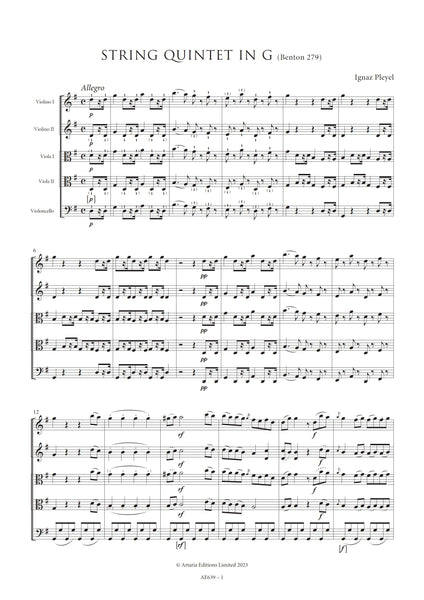
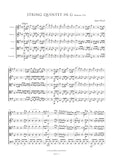
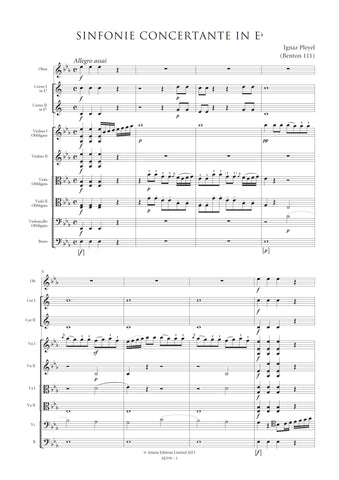

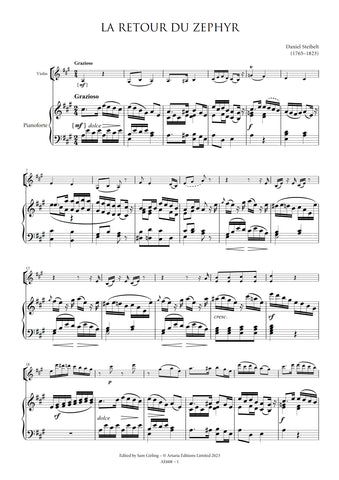
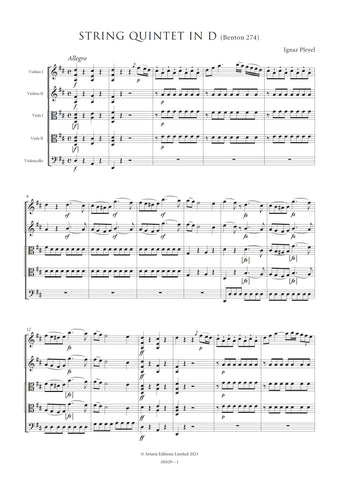
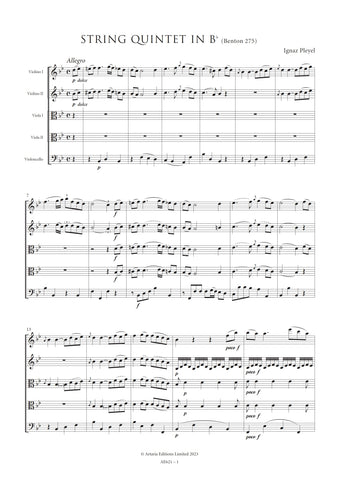
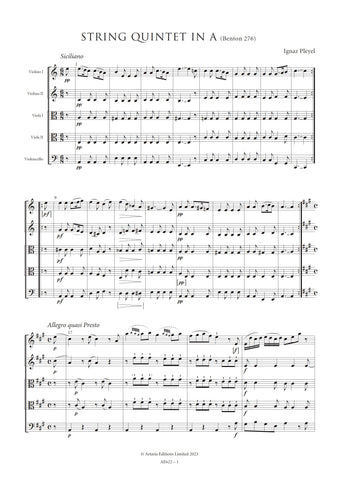
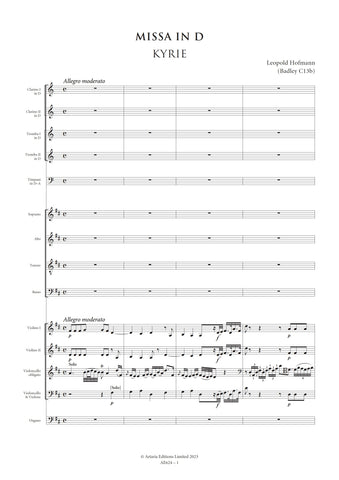
![Hofmann, Leopold: Missa in D (Badley C13b) [Vocal Score] (AE624/VS)](http://www.artaria.com/cdn/shop/files/ae624vs_1stpage_large.jpg?v=1697794050)
![Hofmann, Leopold: Missa Sancti Erasmi (Badley D4a) [Vocal Score] (AE642/VS)](http://www.artaria.com/cdn/shop/files/ae642vs_1stpage_large.jpg?v=1697798128)